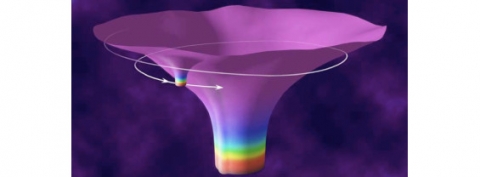Detecting scalar fields with Extreme Mass Ratio Inspirals

Testing the nature of gravity and the validity of Einstein's theory is one of the most ambitious goals of gravitational wave detectors, and a primary target of the space interferometer LISA, an ESA mission which will be launced in 2034.
LISA will be able to follow the inspiral of a small black hole or a neutron star around a supermassive black hole for hundreds of thousands of orbits, providing a very accurate description of the coalescence. The simplest modifications of General Relativity predict the existence of scalar fields which modify the gravitational interaction. These elusive fields would only be observable in high-energy astrophysical processes, such as the coalescence of black holes or compact objects. However the modelling of these sources and of their gravitational wave emission beyond general relativity is a formidable challenge. In a recent letter, the gravity group members Andrea Maselli and Leonardo Gualtieri, together with researchers at SISSA and at the Nottingham University, have shown that for a vast class of gravity theories this process has a very simple description in terms of the motion of a scalar charge around a black hole. This work shows that all the information on the modifications of Einstein's theory are universally captured by a single parameter, the scalar charge of the small object.
The analysis of the signal observed by LISA will allow - using the result of this letter - a new class of tests of general relativity, which do not require the detailed knowledge of underlying theory of gravity.
Authors
Andrea Maselli, Leonardo Gualtieri
Reference
Physical Review Letters
